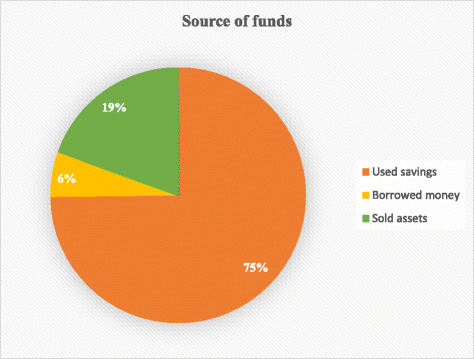The operations of the free maternal care policy and out of pocket payments during childbirth in rural Northern Ghana
- PMID: 29168019
- PMCID: PMC5700011
- DOI: 10.1186/s13561-017-0180-4
The operations of the free maternal care policy and out of pocket payments during childbirth in rural Northern Ghana
Abstract
Background: To promote skilled attendance at births and reduce maternal deaths, the government of Ghana introduced the free maternal care policy under the National Health Insurance Scheme (NHIS) in 2008. The objective is to eliminate financial barriers associated with the use of services. But studies elsewhere showed that out of pocket (OOP) payments still exist in the midst of fee exemptions. The aim of this study was to estimate OOP payments and the financial impact on women during childbirth in one rural and poor area of Northern Ghana; the Kassena-Nankana municipality. Costs were taken from the perspective of women.
Methods: Quantitative and qualitative data collection techniques were used in a convergent parallel mixed methods study. The study used structured questionnaire (n = 353) and focus group discussions (FGDs =7) to collect data from women who gave birth in health facilities. Quantitative data from the questionnaire were analysed, using descriptive statistics. Qualitative data from the FGDs were recorded, transcribed and analysed to determine common themes.
Results: The overall mean OOP payments during childbirth was GH¢33.50 (US$17), constituting 5.6% of the average monthly household income. Over one-third (36%, n = 145) of women incurred OOP payments which exceeded 10% of average monthly household income (potentially catastrophic). Sixty-nine percent (n = 245) of the women perceived that the NHIS did not cover all expenses incurred during childbirth; which was confirmed in the FGDs. Both survey and FGDs demonstrated that women made OOP payments for drugs and other supplies. The FGDs showed women bought disinfectants, soaps, rubber pads and clothing for newborns as well. Seventy-five percent (n = 264) of the women used savings, but 19% had to sell assets to finance the payments; this was supported in the FGDs.
Conclusion: The NHIS policy has not eliminated financial barriers associated with childbirth which impacts the welfare of some women. Women continued to make OOP payments, largely as a result of a delay in reimbursement by the NHIS. There is need to re-examine the reimbursement system in order to prevent shortage of funding to health facilities and thus encourage skilled attendance for the reduction of maternal deaths as well as the achievement of universal health coverage.
Keywords: Childbirth; Delivery; Fee exemption; Free maternal care policy; Ghana; National Health Insurance; Out of pocket payments; Skilled attendance; Social health insurance; Universal health coverage.
Conflict of interest statement
Ethics approval and consent to participate
The Ethical Review Board of the Navrongo Health Research Centre, Ghana (NHRCIRB217) and the Human Research Ethics Committee of the University of Technology Sydney (ETH16-0263) approved for the conduct of the study. Informed consent was obtained from all participants.
Consent for publication
Written informed consent was obtained from the patient for publication of this case report and accompanying images.
Competing interests
The authors declare that they have no competing interests.
Publisher’s Note
Springer Nature remains neutral with regard to jurisdictional claims in published maps and institutional affiliations.
Figures
References
-
- UNICEF. UNICEF data: monitoring the situation of children and women: UNICEF; 2016.
-
- IMCIBO . Improving birth outcomes: meeting the challenge in the developing world. In: Bale JR, Stoll BJ, Lucas AO, editors. Reducing maternal mortality and morbidity. 2. Washington: National Academies Press (US); 2003. - PubMed
-
- GSS . Ghana poverty mapping report. Accra: Ghana Statistical Service; 2015.
LinkOut - more resources
Full Text Sources
Other Literature Sources
Miscellaneous


